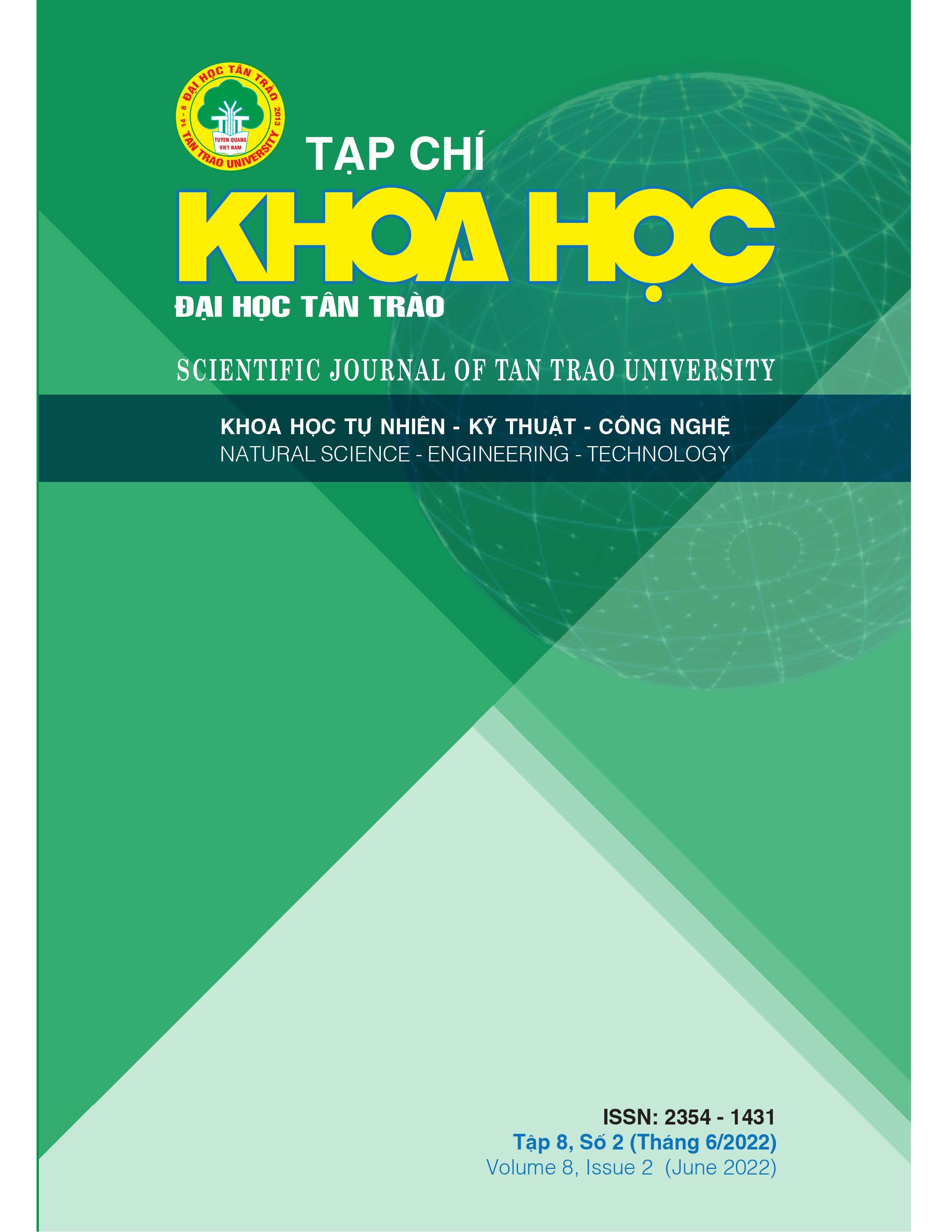NGHIÊN CỨU ĐẶC ĐIỂM SINH HỌC CỦA SÁU DÒNG CHÈ ĐƯỢC TẠO RA BẰNG PHƯƠNG PHÁP LAI HỮU TÍNH
DOI:
https://doi.org/10.51453/2354-1431/2022/751Từ khóa:
Äặc Ä‘iểm sinh há»c, dòng chè lai, lai hữu tÃnhTóm tắt
Nghiên cứu đặc điểm sinh học của sáu dòng chè lai hữu tính: dòng 119, 216, 317, 232, 233, 212. Sau thời gian một năm tiến hành bố trí thí nghiệm và theo dõi các chỉ tiêu về hình thái của thân cành, lá và búp của sáu dòng nghiên cứu thu được kết quả như sau: Các dòng chè 317, 232, 233, 212 có dạng thân gỗ, lá nhỏ, búp nhỏ hoặc trung bình. Riêng dòng 119, 216 có thân bụi, lá to trung bình và búp to, đặc trưng có khả năng sinh trưởng khỏe, tiềm năng cho năng suất cao. Hầu hết các dòng đều có ngoại hình đẹp, khối lượng búp vừa phải, lá màu xanh hoặc xanh vàng, búp thường có màu xanh, xanh vàng hoặc xanh phớt tím. Hai dòng chè lai là dòng 212 và dòng 233 có khả năng sinh trưởng khỏe hơn, cho năng suất cao hơn các dòng chè nhập nội và giống đối chứng Kim Tuyên. Dòng 212 cho năng suất cao nhất lên đến lên đến 4,92 tấn/ha và dòng 233 đạt 4,58 tấn/ha.
Tải xuống
Tài liệu tham khảo
[1] Hoàng Cự, Nguyễn Văn Tạo (2004), “ Thành phần nguyên liệu các giống chè mới trồng tại Phú Hộ - Phú Thọ”, Tạp chí Nông nghiệp và Phát triển nông thôn, (5), Hà Nội.
[2] Ngô Xuân Cường (2011), Nghiên cứu công nghệ sản xuất chè xanh chất lượng cao, Luận án Tiến sí kỹ thuật, Đại học Bách khoa Hà Nội.
[3] Đỗ Văn Ngọc (2006), “ Nghiên cứu các giải pháp khoa học công nghệ và thị trường để nâng cao chất lượng chè xuất khẩu”, Kết quả nghiên cứu Khoa học và chuyển giao công nghệ giai đoạn 2001- 2005, NXB Nông nghiệp, Hà Nội, Tr 78 – 81.
[4] L. Rajanna and M. Ramakrishnan1* (2010), “Isozyme studies on some selected Camellia clones”, International Journal of Engineering Science and Technology, pp 6918-6921.
[5] Min- Jer Lu a, b, Chinshuh Chen b*, (2007): “Enzymatic tannase treatment of green tea increases in vitro inhibitory activity against N- nitrosation of dimethylamine ”.
[6] S.M. Kamunya, F.N. Wachira, R.S.Pathak, R.C.Muoki, J.K.Wanyoko, W.K.Ronno and R.K.Sharma (2009), “Quantitative genetic parameters in tea (Camellia sinensis (L.) O. Kuntze)”, African Journal of Plant Science Vol. 3 (5), PP. 093- 101.
Tải xuống
Đã Xuất bản
Cách trích dẫn
Số
Chuyên mục
Giấy phép

Tác phẩm này được cấp phép theo Giấy phép Quốc tế Creative Commons Attribution-ShareAlike 4.0 .
Bài báo được xuất bản ở Tạp chí Khoa học Đại học Tân Trào được cấp phép theo giấy phép Ghi công - Chia sẻ tương tự 4.0 Quốc tế (CC BY-SA). Theo đó, các tác giả khác có thể sao chép, chuyển đổi hay phân phối lại các bài báo này với mục đích hợp pháp trên mọi phương tiện, với điều kiện họ trích dẫn tác giả, Tạp chí Khoa học Đại học Tân Trào và đường link đến bản quyền; nêu rõ các thay đổi đã thực hiện và các nghiên cứu đăng lại được tiến hành theo cùng một bản quyền.
Bản quyền bài báo thuộc về các tác giả, không hạn chế số lượng. Tạp chí Khoa học Tân Trào được cấp giấy phép không độc quyền để xuất bản bài báo với tư cách nhà xuất bản nguồn, kèm theo quyền thương mại để in các bài báo cung cấp cho các thư viện và cá nhân.
Mặc dù các điều khoản của giấy phép CC BY-SA không dành cho các tác giả (với tư cách là người giữ bản quyền của bài báo, họ không bị hạn chế về quyền hạn), khi gửi bài tới Tạp chí Khoa học Đại học Tân Trào, tác giả cần đáp ứng quyền của độc giả, và cần cấp quyền cho bên thứ 3 sử dụng bài báo của họ trong phạm vi của giấy phép.






